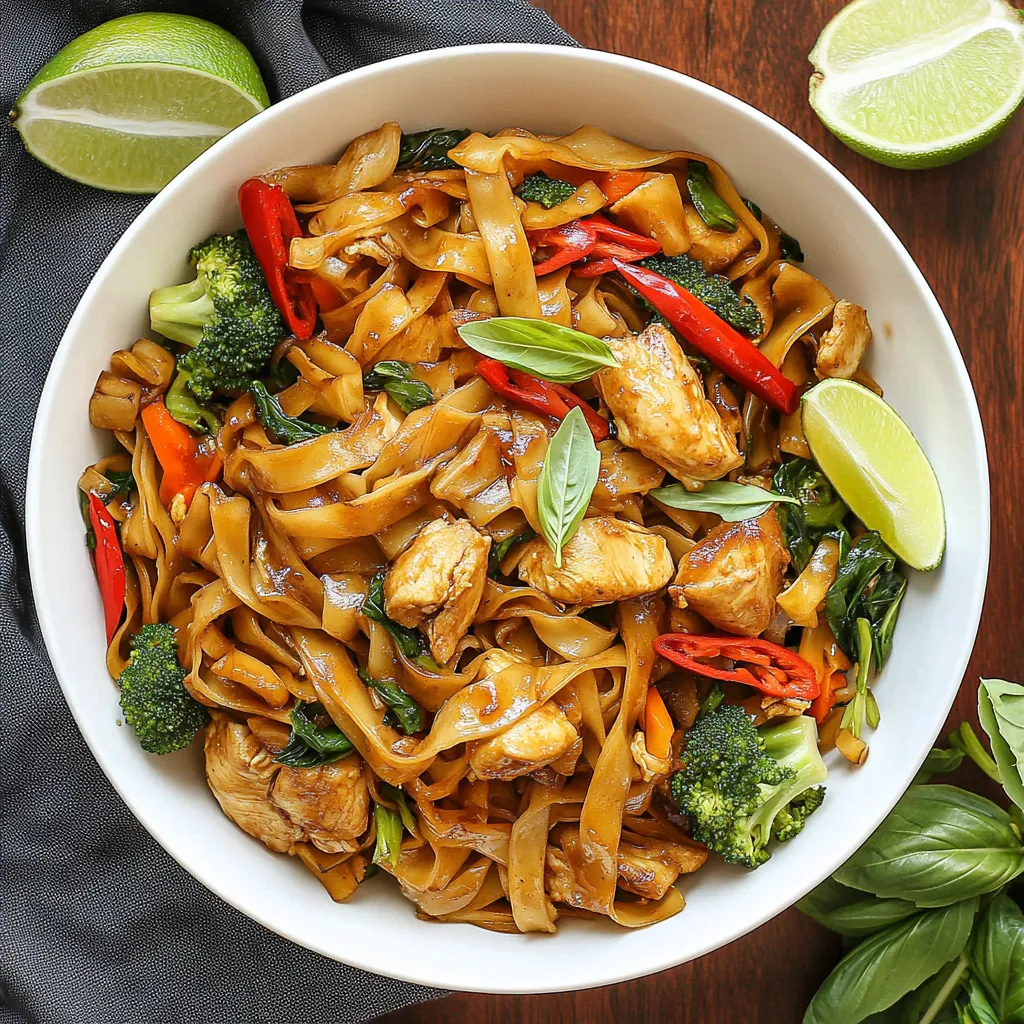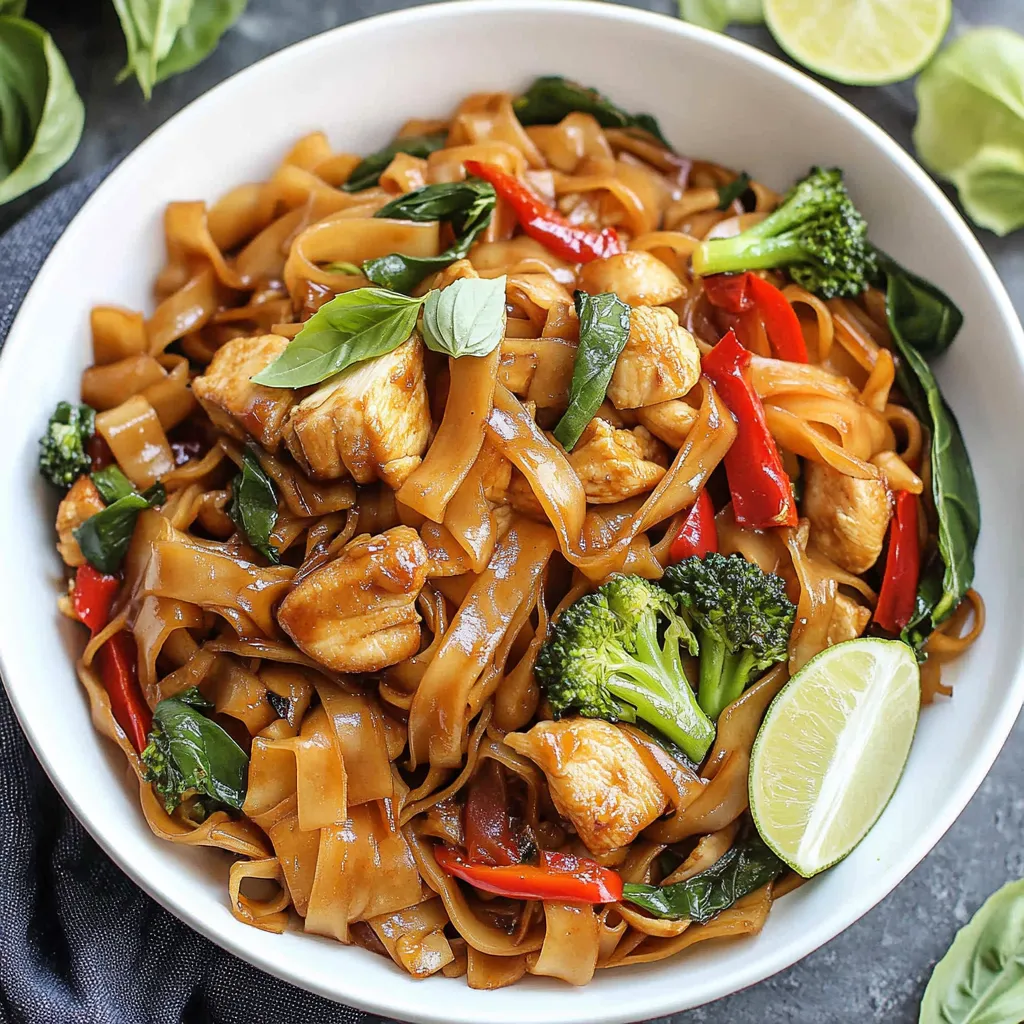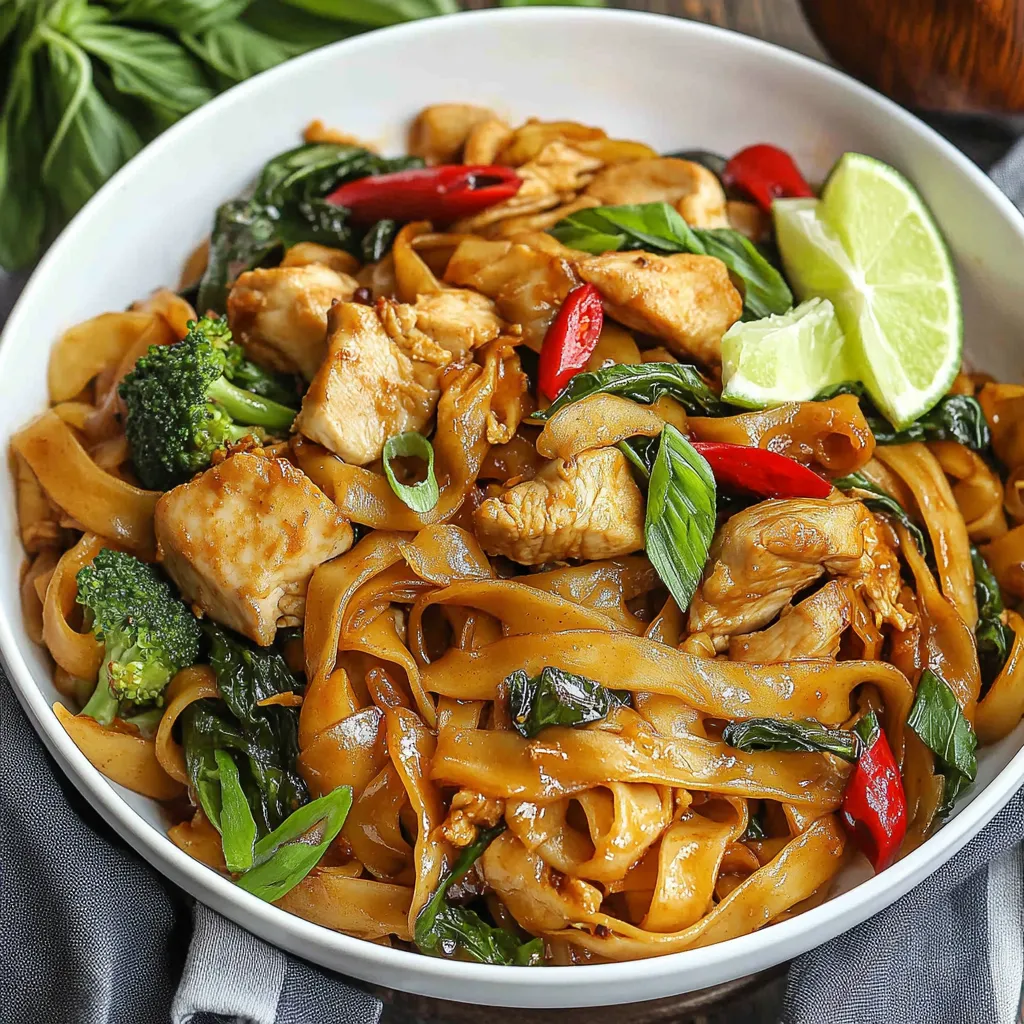 Pin it
Pin it
Drunken noodles transport you straight to the bustling streets of Thailand with their intoxicating aroma and bold flavors. This beloved dish combines wide, chewy rice noodles with succulent chicken and crisp vegetables, all enveloped in a perfectly balanced sauce that hits every taste bud. Despite its complex flavor profile, this restaurant favorite comes together in your kitchen in just 35 minutes.
After years of experimenting with this recipe, I've found it brings the same joy as my favorite Thai restaurant's version. My family now requests it weekly, especially when we crave something more exciting than ordinary takeout.
Essential Ingredients Guide
- Wide Rice Noodles: Look for 'sen yai' or 'ho fun' noodles that are pearly white, about 1/4 inch wide. Fresh noodles should be soft and pliable, while dried ones should be unbroken and uniform in color
- Chicken Thighs: Select boneless, skinless thighs with even coloring and slight marbling. They should feel firm but not hard, with no off odors. Trim visible fat but leave some for flavor
- Thai Basil: Choose bunches with vibrant purple stems and deep green leaves. Avoid wilted or yellowed leaves. The aroma should be strong and distinctly anise-like
- Thai Bird Chilies: Pick firm, bright red chilies with fresh green stems. Smaller chilies typically pack more heat. Handle with care and consider wearing gloves
- Garlic: Select firm, tight heads with unblemished cloves. Fresh garlic should feel heavy for its size with papery, intact skin
- Bell Peppers: Choose peppers that feel firm and heavy, with glossy skin and fresh-looking stems. Avoid wrinkled or soft spots
- Onions: Select firm onions with crisp, papery skins and no soft spots or sprouting
- Oyster Sauce: Premium brands like Lee Kum Kee or Maekrua offer the best flavor balance
- Fish Sauce: Look for clear, amber-colored sauce without sediment. Three Crabs or Red Boat brands provide authentic flavor
- Soy Sauce: Use both light and dark soy sauce for complexity. Pearl River Bridge or Healthy Boy are excellent choices
Creating Your Masterpiece
- Noodle Foundation:
- Begin with proper noodle preparation, gently separating them in warm water until they become pliable but retain firmness in the center. Test by bending a noodle it should curve without breaking.
- Sauce Creation:
- Combine premium oyster sauce, fish sauce, both soy sauces, and brown sugar in precise ratios. The sauce should taste balanced between sweet, salty, and umami flavors before cooking.
- Protein Perfection:
- Heat your wok until a drop of water evaporates instantly. Add oil and swirl to coat. Cook chicken pieces without crowding, developing golden edges while maintaining moistness inside.
- Aromatic Base:
- Introduce minced garlic and sliced chilies, stirring constantly until their fragrances bloom but don't burn. This step creates the foundation of authentic Thai flavor.
- Vegetable Symphony:
- Add vegetables in stages according to cooking time. Start with onions until translucent, followed by bell peppers, then broccoli, ensuring each retains its optimal texture.
 Pin it
Pin it
In my kitchen, mastering the art of wok hei (breath of the wok) transformed this dish from good to exceptional. The secret lies in proper heat management and quick, confident movements.
Perfect Accompaniments
Create a complete Thai feast by serving alongside crispy spring rolls, Tom Yum soup, or a refreshing green papaya salad. Offer extra lime wedges, crushed peanuts, and chili flakes for customization.
Flavor Variations
Adapt this versatile dish by incorporating different proteins like shrimp, beef, or tofu. Create regional variations with different vegetable combinations or develop signature sauce blends.
Preservation Guide
Store leftover noodles separately from sauce and vegetables in airtight containers. When reheating, add a splash of water and stir-fry quickly to revive the original texture.
 Pin it
Pin it
Through countless preparations, I've learned that patience during preparation leads to excellence in execution. The satisfaction of creating this Thai street food classic at home brings both pride and joy to our family table.
Frequently Asked Questions
- → Why is it called Drunken Noodles?
- Despite the name, this dish contains no alcohol. It's called drunken noodles because it's popular as a late-night meal and its spiciness makes you want to drink water.
- → What can I substitute for Thai basil?
- Regular sweet basil can work as a substitute, though it will have a slightly different flavor. Italian basil is the next best option if Thai basil isn't available.
- → Can I make this vegetarian?
- You can replace chicken with tofu or mushrooms, and use vegetarian oyster sauce (made from mushrooms) instead of regular oyster sauce.
- → How spicy are drunken noodles?
- Traditional drunken noodles are quite spicy. You can adjust the heat level by using fewer Thai chilies or removing the seeds for a milder version.
- → What type of noodles should I use?
- Wide rice noodles are traditional for this dish. Look for fresh rice noodles at Asian markets, or use dried wide rice stick noodles if fresh aren't available.
